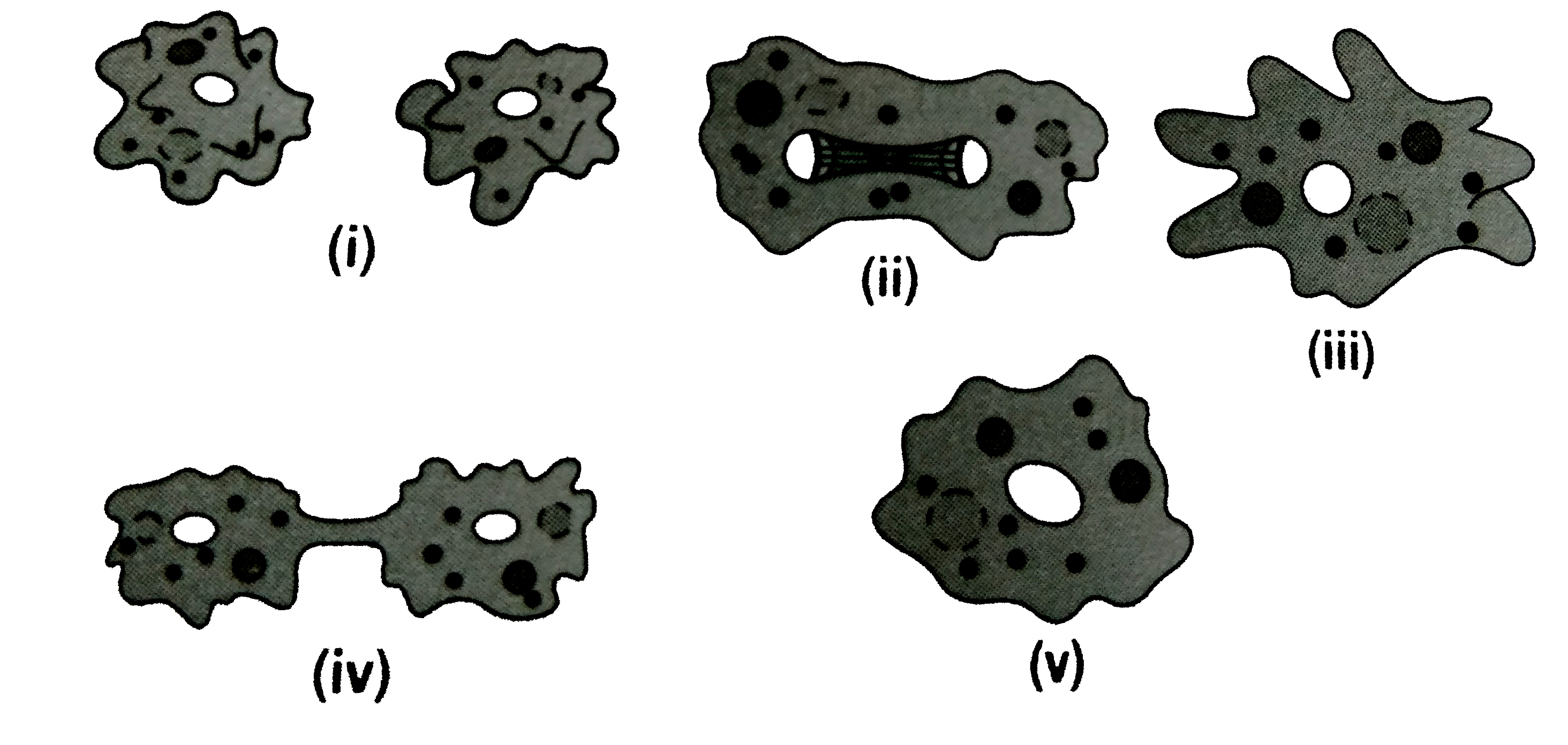Binary fission in Amoeba occurs by
Mitosis
Meiosis
Amitosis
None of the above.
The correct Answer is:A
Step-by-Step Solution:
1. Understanding Binary Fission:
- Binary fission is a method of asexual reproduction where a single parent cell divides into two equal daughter cells. This process is commonly observed in unicellular organisms like Amoeba.
2. Identifying the Process of Cell Division:
- The question asks how binary fission occurs in Amoeba. We need to evaluate the options provided: mitosis, meiosis, amitosis, or none of the above.
3. Evaluating Mitosis:
- Mitosis is a type of cell division that results in two daughter cells that are identical to the parent cell. It involves the formation of spindle fibers and is an equational division, meaning the chromosome number remains the same.
4. Evaluating Meiosis:
- Meiosis is a reductional division that results in daughter cells with half the chromosome number of the parent cell. It also involves spindle fiber formation, which is not characteristic of binary fission.
5. Evaluating Amitosis:
- Amitosis is a simpler form of cell division where the nucleus divides directly into two without the formation of spindle fibers. This process is more aligned with the nature of binary fission.
6. Conclusion:
- Since binary fission in Amoeba occurs without the formation of spindle fibers, the correct answer is amitosis. Therefore, the answer to the question is option C: amitosis.
---
- Binary fission is a method of asexual reproduction where a single parent cell divides into two equal daughter cells. This process is commonly observed in unicellular organisms like Amoeba.
- The question asks how binary fission occurs in Amoeba. We need to evaluate the options provided: mitosis, meiosis, amitosis, or none of the above.
- Mitosis is a type of cell division that results in two daughter cells that are identical to the parent cell. It involves the formation of spindle fibers and is an equational division, meaning the chromosome number remains the same.
- Meiosis is a reductional division that results in daughter cells with half the chromosome number of the parent cell. It also involves spindle fiber formation, which is not characteristic of binary fission.
- Amitosis is a simpler form of cell division where the nucleus divides directly into two without the formation of spindle fibers. This process is more aligned with the nature of binary fission.
- Since binary fission in Amoeba occurs without the formation of spindle fibers, the correct answer is amitosis. Therefore, the answer to the question is option C: amitosis.
Topper's Solved these Questions
- KINGDOM PROTISTA (UNICELLULAR EUKARYOTES)BOOK - DINESH PUBLICATION ENGLISHCHAPTER - KINGDOM PROTISTA (UNICELLULAR EUKARYOTES)EXERCISE - REVISION QUESTION FROM COMPETITIVE EXAMS.
298 Videos
- KINGDOM PROTISTA (UNICELLULAR EUKARYOTES)BOOK - DINESH PUBLICATION ENGLISHCHAPTER - KINGDOM PROTISTA (UNICELLULAR EUKARYOTES)EXERCISE - CHECK YOUR GRASP
19 Videos
- KINGDOM PLANTAE OR METAPHYTA BOOK - DINESH PUBLICATION ENGLISHCHAPTER - KINGDOM PLANTAE OR METAPHYTA EXERCISE - CYG
20 Videos
- LEAFBOOK - DINESH PUBLICATION ENGLISHCHAPTER - LEAFEXERCISE - CYG
10 Videos
Similar Questions
Knowledge Check
During binary fission in Amoeba which of the following organelles is duplicated ? a) plasma membrane b) nucleus c) contractile vacuole d) all of these
APalsma membraneBNucleusCContractile vacuoleDAll of theseStudy the given figures representing the process of binary fission in Amoeba.
Arrange the figures in the correct sequence and select the correct answer.
 A(iv)→(iii)→(i)→(ii)→(v)B(iii)→(iv)→(i)→(ii)→(v)C(v)→(iii)→(ii)→(iv)→(i)D(iv)→(iii)→(ii)→(v)→(i)
A(iv)→(iii)→(i)→(ii)→(v)B(iii)→(iv)→(i)→(ii)→(v)C(v)→(iii)→(ii)→(iv)→(i)D(iv)→(iii)→(ii)→(v)→(i)
Complete the sequence involved in binary fission in amoeba.
Nucleus enlarges →(A)→Cytokinesis→(B)
View SolutionBinary fission in Euglena is
View SolutionHow binary fission in Amoeba can differentiated form budding in yeast ?
View SolutionBinary fission generally occurs during _____ conditions.
View SolutionBinary fission is a type of
View SolutionBinary fission is found in
View Solution
